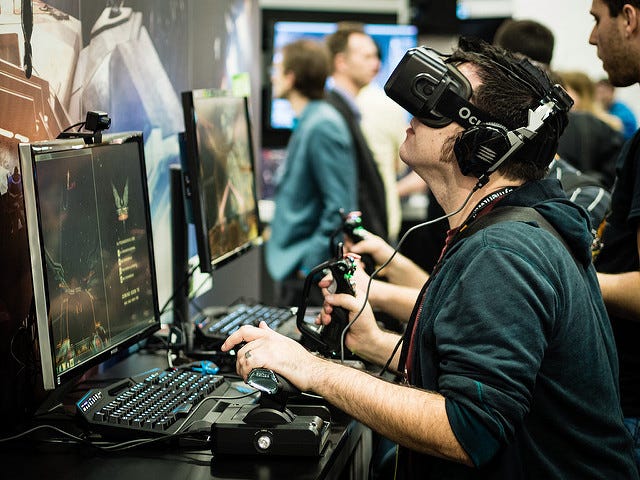The Fast-Paced Innovation of Game Development Strategy
Within just the past decade the industry of game development has undergone radical changes. Game development has steadily shifted away from a handful of AAA studios towards smaller, independent developers -- and gamers themselves have evolved.

Within just the past decade the industry of game development has undergone some radical changes. Game development has steadily shifted away from a handful of AAA studios towards smaller, independent developers -- and gamers themselves have recently evolved from a relatively small segment of dedicated hobbyists to virtually anyone with a smartphone or Internet connection, increasing the base of younger players. From MMORPGs to gambling games, developers are now finding themselves in competition with hundreds if not thousands of small and innovative studios. All of this together has created an industry that uses creativity as its primary currency.
The Steady Rise of Casual Gaming
Sometimes simpler is better. Candy Crush, Flappy Bird -- these titles became household names due to their maddeningly addictive gameplay. Casual games have been able to inhabit a space never before explored by game developers; consumers who would never play World of Warcraft, Call of Duty, or even a round of online card games, will still pick up a simple casual game like Farmville. It all lies in the ability to pick up a game, play it, and generate some form of reward without having to invest significant amounts of time learning the rules.
Interestingly, while console and computer games are entering the “8th generation” of innovation and refinement, we see the opposite occur in mobile gaming. While PC game developers are continuously creating more expansive worlds, challenging gameplay, and realistic graphics, mobile gaming is concentrated on cleaner, vector-graphic interfaces and gameplay simplicity. It’s not necessarily gameplay and innovation that is fueling progress in the gaming industry; it’s all about distribution and the ability to reach as many people as possible: avid gamers or not.

PC versus mobile gaming: intricate gameplay and visual design that are worlds apart.
Above, Fallout 4’s realistic aesthetics and Angry Bird’s clean-cut vector design
That’s the case in numerous gaming niches. Studies of online gaming have shown that the online gambling industry has tripled within the last ten years, corresponding to the rise of casual gaming and the increased accessibility of games on iPhones, tablets, and other devices. A significant portion of online gambling activity now consists of playing slot machines: casual and entertaining fun. And casual gaming doesn't preclude innovation. The most popular games of 2015 included Fruit Ninja and Angry Birds; brightly-colored, lighthearted games that are as addictive as they are exciting. Casual games and slot machines are both able to tap into the rewards systems within an individual's brain, while innovation lends a twist that differentiates games from their competitors.
Interactive, Social Gaming Sessions
But we haven't only changed what we're playing, we've also changed how we're playing. Twitch has steadily become a force unto itself, launching an entirely new video game related pastime: streaming. Professional streamers now make thousands (if not tens of thousands) of dollars every month, simply playing games and interacting with their audience. Viewers now tune in to watch games played rather than playing them on their own, creating an entire side industry based on donations, sponsorship, and advertising.
 Twitch boasts a whopping 1.7 million streamers worldwide who have streamed over 7.5 billion minutes of live gameplay since 2012. More staggering is the amount of time users spend on Twitch: 58% of users spend more than 20 hours a week spectating games, about 1:45 hours per day. Of these users, 71% are millennials. Source: DMR Digital Stats
Twitch boasts a whopping 1.7 million streamers worldwide who have streamed over 7.5 billion minutes of live gameplay since 2012. More staggering is the amount of time users spend on Twitch: 58% of users spend more than 20 hours a week spectating games, about 1:45 hours per day. Of these users, 71% are millennials. Source: DMR Digital Stats
This in turn creates a need for developers to integrate streaming into games’ user experience: is the game visual and interesting enough to attract the masses of online viewers on Twitch and YouTube? Today’s console and PC games must take into account the influence of streamers for marketing, outreach and even for gameplay enjoyment. By failing to create a visual game that attracts a spectating audience, the game is bound to fail.
As with casual games, developers are swiftly learning that it isn't just about the challenge of a game: it's about an experience. Games are becoming incredibly social, and many developers are focusing their innovation on ways to better improve interactivity. This has led to a rise of MMORPGs and MOBAs, all of which are able to be played either cooperatively or competitively.
Game Development Becomes Easier
But why are there so many games being developed? Indie game development has become radically easier for two major reasons: the proliferation of cheap, professional game engines and crowdfunding systems like Kickstarter and IndieGoGo. Unreal Engine, Unity, and CryEngine all offer professional game designing platforms for indie developers on a pay-as-you-publish basis. Prior to this, professional game engines were often priced at thousands of dollars upfront, cutting many developers out of the competition. Meanwhile, Kickstarter and IndieGoGo now make it easy for indie developers with innovative ideas to get funding before they even write a line of code.
 Indie game funding has increased radically year to year. By 2012, it made up for almost 25% of Kickstarter funds, whereas in 2011, it was only 3.6%. The numbers have only increased since then. Source: Kickstarter
Indie game funding has increased radically year to year. By 2012, it made up for almost 25% of Kickstarter funds, whereas in 2011, it was only 3.6%. The numbers have only increased since then. Source: Kickstarter
All of this means that the cost of innovation has gone down dramatically. Through crowdfunding platforms, new developers can test out the general appeal of their ideas before they've even begun development. Gamers are now seeing riskier, more experimental games come through the pipeline because the risk has shifted away from the developers themselves and towards the consumer base.
Virtual Reality Comes to the Home
Finally, it would be impossible to discuss recent innovations in gaming without also discussing the new virtual reality systems scheduled for release in 2016. The Oculus Rift (July 2016), HTC Vive (May 2016), and PlayStation VR (October 2016) are all poised to bring virtual reality into consumer homes this year. From social networking to living casinos, virtual reality is seeking to successfully replicate a fully interactive 3D world through a combination of headsets and motion-based controls. And this may be able to revolutionize the experience of casual gaming.
 Virtual reality is the future of gameplay: an immersive technology that could eventually feel as real as life itself. Above, game developers experience the Oculus Rift. Source: Sergey Galyonkin
Virtual reality is the future of gameplay: an immersive technology that could eventually feel as real as life itself. Above, game developers experience the Oculus Rift. Source: Sergey Galyonkin
Virtual reality has limits: one of the major limits of which is the fact that motion can be a challenge and raw combat can be distressing. Consequently, most developers are focusing on replicating real life environments such as theme parks, poker tables, and even educational classrooms. Until the technology has been properly refined, it's very likely that virtual reality will focus on creating similar experiences that have an entertaining twist.
Casual games, social games, indie games, and virtual reality games -- all of these trends have been driving innovation within the game development community. The modern gaming community is broader than ever; a hobby with previously niche appeal is now making its way into every household. Game development is likely to continue to build in its creativity and diversity, as many indie developers are now experimenting to create brand new experiences utilizing the new technologies that have been introduced.
Read more about:
BlogsAbout the Author(s)
You May Also Like







.jpeg?width=700&auto=webp&quality=80&disable=upscale)








